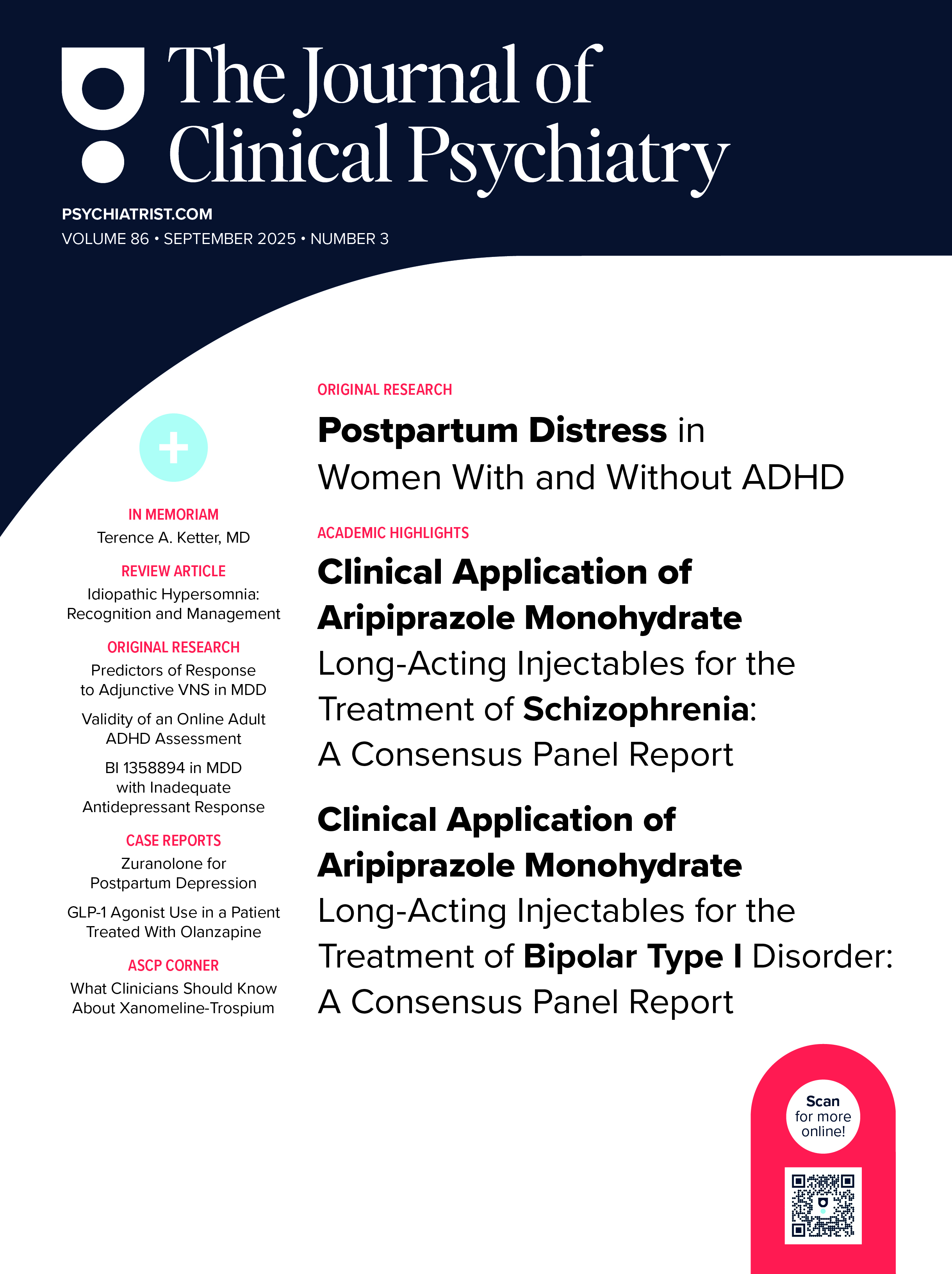Background: Previous studies have reported the
efficacy of selective serotonin reuptake inhibitors as
monotherapy in the treatment of delusional depression. The
clinical efficacy of venlafaxine, a serotonin-norepinephrine
reuptake blocker, has been demonstrated in the treatment of
patients with moderate-to-severe depression, but, to date, no
evidence is available about its use in depressed patients with
psychotic features.
Method: Under double-blind conditions, 28
hospitalized patients who met DSM-IV criteria for major
depression, severe with psychotic features, were randomly
assigned to receive fluvoxamine or venlafaxine, 300 mg/day, for 6
weeks. Severity was evaluated using the Hamilton Rating Scale for
Depression (HAM-D) and the Dimensions of Delusional Experience
Rating Scale (DDERS) administered at baseline and every week
thereafter. Side effects were also recorded. Clinical response
was defined as a reduction of the scores in the 21-item HAM-D to
8 or below and in the DDERS to 0.
Results: At study completion, the response rates
were 78.6% (N = 11) and 58.3% (N = 7) for fluvoxamine and
venlafaxine, respectively. No significant difference was found
between drugs (Fisher exact test, p = .40). Analysis of
covariance on HAM-D scores did not reveal a significantly
different decrease of depressive symptomatology between the 2
treatment groups (p = .14). Treatment response appeared to be
unrelated to the demographic and clinical characteristics
recorded. The overall safety profile of both fluvoxamine and
venlafaxine was favorable.
Conclusion: The results of this pilot
double-blind trial show that fluvoxamine is useful in the
treatment of delusional depression and suggest that venlafaxine
may also be an effective compound in the treatment of this
disorder. The latter finding, although promising, warrants
further replication in a larger sample of patients.
Members Only Content
This full article is available exclusively to Professional tier members. Subscribe now to unlock the HTML version and gain unlimited access to our entire library plus all PDFs. If you’re already a subscriber, please log in below to continue reading.
Please sign in or purchase this PDF for $40.00.
Already a member? Login




